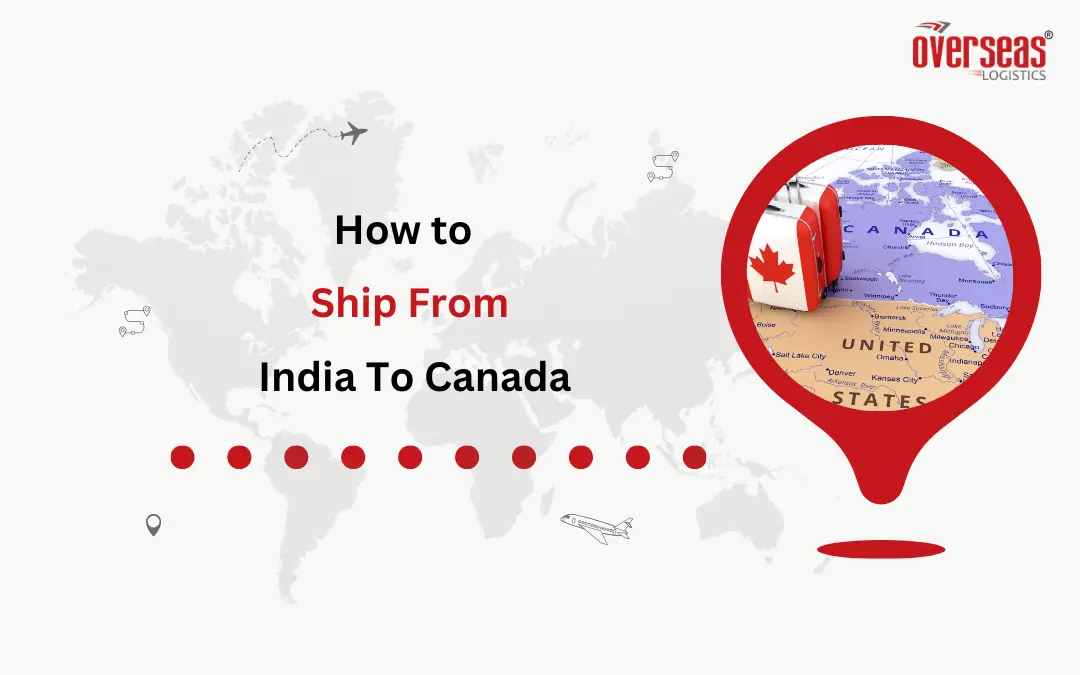Unlocking the potential of bilateral trade between India and Canada requires a strategic approach to international shipping. In this comprehensive guide, we delve into the intricacies of shipping from India to Canada, unraveling hidden opportunities and providing practical, step-by-step instructions for a seamless process.
Why Canada for Your Export Venture?
Canada, with its population of over 37 million, emerges as a diverse market with an insatiable appetite for quality goods. Beyond the stereotypes of snow, maple syrup, and hockey, Canada stands as an economic powerhouse, showcasing steady growth in diverse product demands. From spices to software, textiles to technology, the billion-dollar trade potential beckons Indian exporters to tap into Canada’s diverse and robust market.
The Market Dynamics
Canada’s multicultural society creates a melting pot of cultures, translating into a varied demand for goods and services. Indian exporters hold a competitive edge, providing products like textiles, spices, and advanced technology services that align with Canada’s penchant for quality and diversity.
Step-by-Step Guide: Navigating the Shipping Process
Identifying Goods and Ensuring Compliance
Before embarking on your shipping journey, a crucial first step is understanding what you’re shipping. Specific import regulations in Canada must be adhered to, alongside compliance with India’s export policies. Collaboration with Compliance Assessment Bodies (CABs) in India ensures that your goods meet quality and safety standards.
Determining Product Classification for Export Controls
Product classification, identified through a Harmonized System (HS) code, is pivotal for tax, duty, and permit considerations. The Export Control List (ECL) plays a crucial role in dictating the exportability of certain goods.
Choosing a Customs Broker
Selecting a customs broker, especially one specializing in the Canada-India trade corridor, is essential. This expert guides you through international shipping laws and procedures, ensuring a smooth process for businesses new to shipping to Canada.
Preparing Necessary Paperwork
Airway Bill: This contract between you and the carrier outlines the shipment details and destination.
Canadian Commercial Invoice (CCI): The primary document for Canadian customs, detailing responsibilities for duties and taxes.
Additional Documents: Include a Certificate of Origin for duty-free advantages, especially if your goods are part of the USMCA agreement.
Role of the Customs Broker in the Paperwork
Maintaining accurate communication with your customs broker is crucial. They meticulously review documentation, such as the Bill of Lading and CCI, ensuring flawless paperwork to avoid delays in customs clearance.
How Your Freight Clears Customs
Pre-shipment Steps: Your customs broker liaises with the Canada Border Services Agency (CBSA) to ensure correct duties and tax assignments.
At the Border: CBSA reviews your broker’s paperwork, clearing your goods for entry into Canada.
Post-Customs Clearance: After clearance, the final leg of the journey commences. If your carrier operates in Canada, they handle this; otherwise, local carriers take over for final delivery.
Understanding Fees and Duties
Clarifying fee responsibilities in advance is essential to avoid surprises for both sender and receiver. While receivers usually cover fees, understanding this beforehand ensures a smooth transaction.
Handling Special Cases
Prepare for unexpected delays or special handling requirements. Having backup plans and being proactive can save you from potential complications.
USMCA and Its Impact on India
The United States-Mexico-Canada Agreement (USMCA) plays a pivotal role in trade dynamics. While India is not a direct participant, the agreement indirectly impacts Indian exporters. Understanding how USMCA influences tariffs, standards, and competition is crucial for adapting and thriving in the Canadian market.
Addressing Common Challenges in Shipping to Canada
Labelling/Packaging Requirements
Accurate labeling and packaging, complying with federal and provincial laws, are legal requirements when exporting to Canada. Neglecting these can lead to costly customs delays or even shipment returns.
Provincial Regulations
Diverse provincial regulations can significantly impact your product. Understanding and adhering to these regional nuances, from labeling to composition, is vital for successful market entry.
Customs Procedures
Navigating customs clearance intricacies requires attention to detail in documents like the Bill of Lading and CCI. Even minor discrepancies can lead to delays, emphasizing the importance of precision.
Dealing with Competition and Pricing Strategies
The Canadian market is competitive, and undercutting competitors with unsustainable low prices can undermine brand value. A sustainable pricing strategy is essential for long-term success.
Shipping and Logistics Planning
Undervalued by many, meticulous shipping and logistics planning is critical. Unexpected delays due to weather, port hold-ups, or national holidays can disrupt schedules. Partnering with reliable shipping companies experienced in Canada-India routes is advisable.
Potential Sectors for Indian Exporters
Technology
Canada’s tech landscape welcomes innovative technologies. Indian tech companies, with expertise in AI, cybersecurity, and data analytics, have a golden opportunity to offer specialized services.
Agriculture
The farm-to-table movement in Canada opens avenues for Indian exporters in the organic food sector. Health-conscious consumers seek global, organic options.
Textiles
Renowned for centuries, Indian textiles find a niche in Canada’s growing interest in sustainable fashion and unique designs.
Handicrafts
Canada’s affinity for artisanal goods creates a market for handmade jewelry, pottery, and traditionally Indian home décor.
Conclusion
International trade presents challenges and opportunities. Recognizing the colossal opportunity that awaits Indian exporters in Canada—a diverse, affluent, and welcoming market—can be transformative. Consider platforms like Overseas Logistics for efficient international shipping, managing logistics, warehousing, and fulfillment.
FAQs
How Long Does Shipping from India to Canada Take?
Shipping times vary, but on average, it takes 2 to 4 weeks for sea freight and 5 to 10 days for air freight.
What Are the Customs Duties and Taxes Involved?
Customs duties and taxes depend on the nature of the goods. Consult with customs authorities or your shipping partner for accurate estimations.
Are There Restrictions on Items Shipped?
Certain items are restricted or prohibited. Verify the list of restricted goods to ensure compliance with Canadian regulations.
Can I Track My Shipment in Real-Time?
Yes, most reputable shipping companies offer real-time tracking services, providing updates on your shipment’s location and estimated delivery time.
How Can I Expedite Customs Clearance?
Ensuring accurate and complete documentation expedites customs clearance. Work closely with your shipping partner to fulfill all requirements promptly.
What Measures Should I Take for Fragile Items?
Packaging is crucial for fragile items. Use sturdy materials and sufficient cushioning to protect delicate items during transit.

